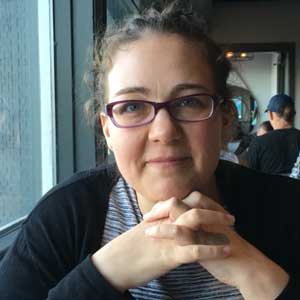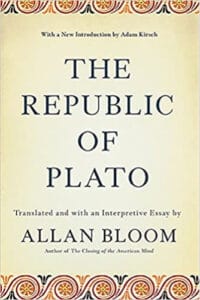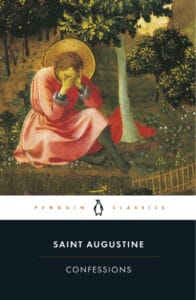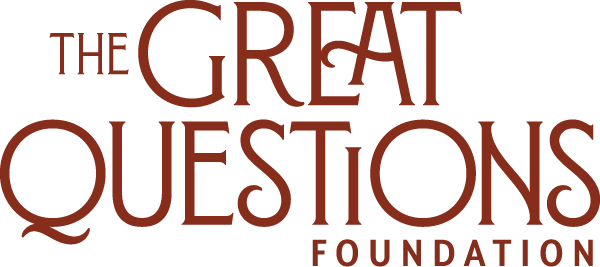It’s for him I cried that’s why you wished me to write it. It’s for him!
Or her she said she were smiling and crying.
Or her my love.
So when our daughter comes into the world she will always know the proper story of her da and who he is and what he suffered.
You may wonder why her speech did not make me gloomy it were clear that your ma were certain I would be murdered by the government and that you would never know what man I were. But it weren’t nothing to do with death at all it were its very opposite you was my future right away from that moment you was my life
Peter Carey
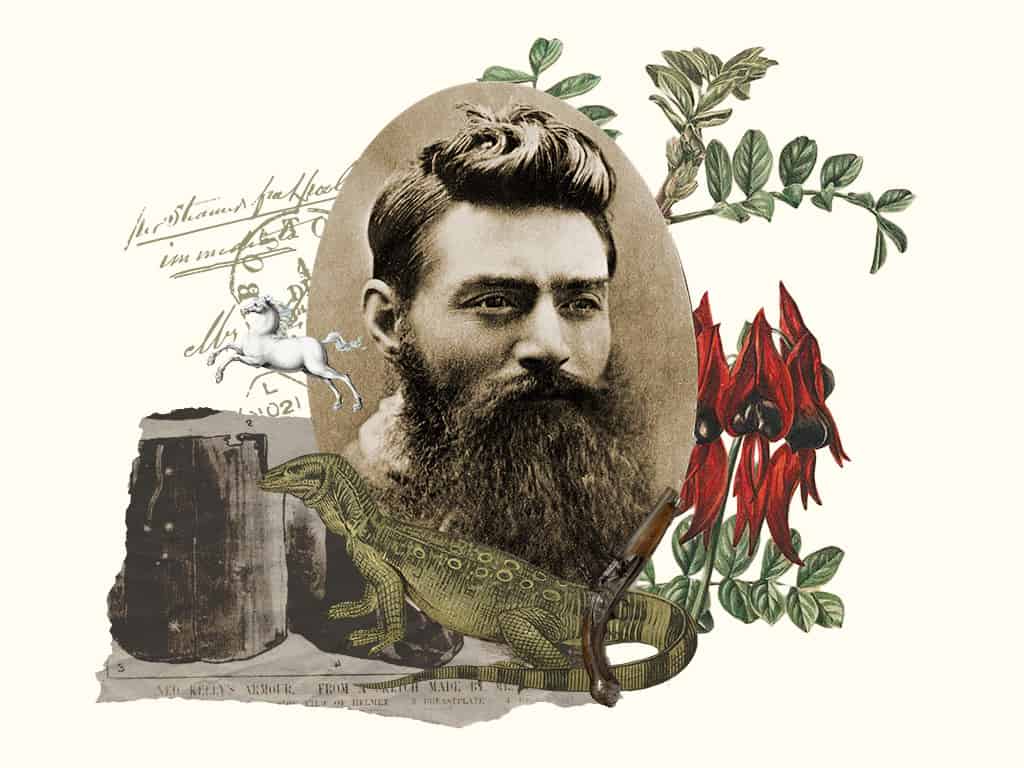
The True History of the Kelly Gang
Peter Carey
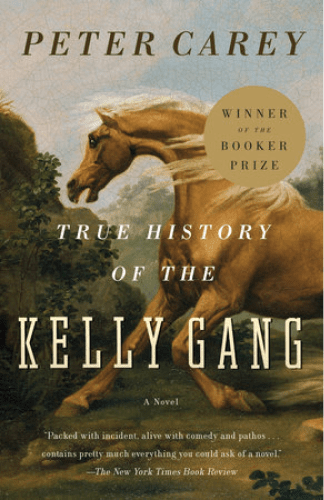
The True History of the Kelly Gang. Peter Carey. 9780375724671
Kelly writes the story to explain to his daughter, who he never expects to know him, his history, and what circumstances triggered his turn to lawlessness.
Peter Carey’s The True History of the Kelly Gang is a historical novel, told in the first person by infamous Australian bushranger (outlaw or highwayman) Ned Kelly. The story follows Ned Kelly from the age of twelve, just before the death of his father, to his own death at the hands of a mob at the Siege of Glenrowan. Kelly writes the story to explain to his daughter, who he never expects to know him, his history, and what circumstances triggered his turn to lawlessness.
Carey attempts verisimilitude by first passing the text off as several archival parcels of letters, complete with notes from rare book librarians. Second, by creating an only partially literate narrative voice in Kelly. He’s often charming, but not sophisticated in language or syntax. Third, the book ends with a third person explanation of how the parcels came to be preserved. The book follows the broad strokes of Kelly’s life story, but also incorporates some of the well-known and even celebrated mythology about the outlaw. (And the inclusion of the word “true” in the title is something that students should be asked to think about.)
**In addition to violence and abuse, this novel features some offensive references to Australia’s aboriginal population, as well as some negative content regarding male sexuality and cross-dressing.
Why This Text is Transformative?
The question at the heart of the novel is whether an outlaw is born or made.
While Kelly certainly can’t be taken as a wholly trustworthy narrator (he is, after all, writing his own legacy), he makes a compelling argument that poverty, abuse, lack of positive male role models, lack of education, and abuse pushed him into a life of crime. Students will see many parallels in both American popular culture and real life, and the book invites conversations about nurture vs. nature, the importance of supportive social structures for children and young adults, the exercise of free will, justice, and personal responsibility. Further, the novel offers perspectives on rural life, race, heroes and anti-heroes, and culture from an Australian perspective, which could spark discussions about the ways in which these topics are depicted differently or similarly to how they are in the U. S. There is no question that the novel also interrogates history, the writing of history, and the veracity of historical documents.
A Focused Selection
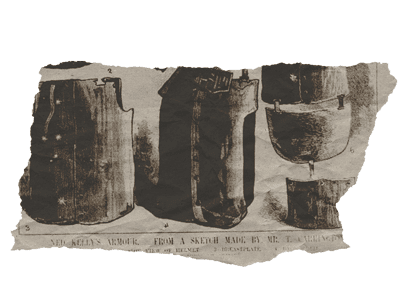
The novel is exciting and moves quickly, but students are bound to be frustrated by the narrator’s grammar, syntax, and punctuation (or lack thereof). For that reason, it might be difficult to incorporate the whole novel into a class that will be tackling several other texts. Reading the first five parcels (just under half the novel) will get students through Kelly’s teen and young adult years and into the section of the text in which he settles into a life of crime. Most of the thematic elements of the text are already introduced and explored, at least to some extent, by that point. The 150 or so pages could be assigned for either two or three class periods, particularly if conversation of the text is going to include historical context and/or other examples of Ned Kelly’s presence in Australian popular culture.
Study Questions
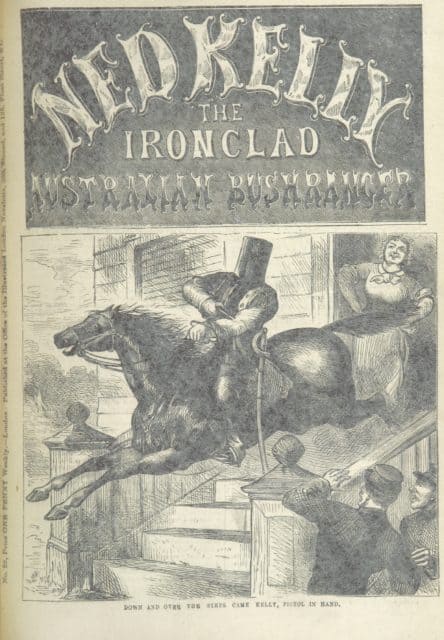
1) What do the terms “anti-hero” and “folk hero” mean to you? Who are some anti-heroes or folk heroes you recognize? What positive values or qualities do these characters (or real people) have? Are there dangers with a culture celebrating these figures? What are they? (The answer can be connected to specific figures.)
2) Although Ned says that he doesn’t want to be apprenticed to Harry Power and tries to escape his apprenticeship, he is clearly influenced by Power. Who are or have been your mentors? What have you learned from them? Do you have conflicted feelings about or experiences with any of your past or present mentors?
3) Are you sympathetic to Ned’s version of how he enters his life of crime? Generally, where do you consider individual responsibility to begin? What factors might mitigate or explain behavior? How do discussions about educational access, privilege, and trauma intersect with the justice and penal systems? (Or, how should they intersect?)
4) How trustworthy is any one person’s account of their own experiences? Have you ever told a story about yourself that was exaggerated or otherwise altered? Why? How did you feel about it? How did you justify it? Ultimately, how do you understand the relationship between some sort of objective truth and perspective?
Building Bridges
Any text that considers the role of the individual in society or the freedom of an individual within society could intersect with The True History of the Kelly Gang. That would include Locke, Rousseau, Nietzsche, Hobbs, and possibly The Republic. Although fictional, the novel is written as a first-person account (or even confession) that focuses on what contributes to the moral and ethical make up of an individual. For that reason, it would read well against Augustine’s Confessions and Narrative of the Life of Frederick Douglass. (Although not on this list of transformative texts, this would also be an excellent read with Franklin’s Autobiography).
Supplemental Resources
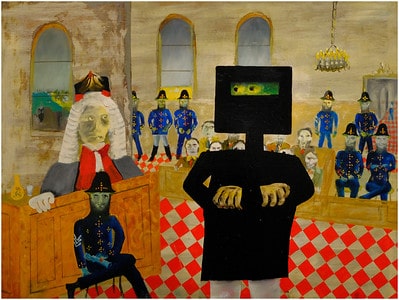
Don Quixote and the Windmills, 1945 - Salvador Dali - WikiArt.org
There is a 2019 feature film based on the novel with some recognizable Australian-born actors, and there is another 2003 film based on the novel Our Sunshine by Robert Drewe titled Ned Kelly, starring Heath Ledger. The Penguin Reader’s Guide for the novel includes some helpful discussion questions. Additionally, Nathanael O’Reilly’s article “Mythology, History, and Truth: Teaching Peter Carey’s True History of the Kelly Gang,” from Antipodes (June 2015) details O’Reilly’s approach to introducing and teaching the novel. For cultural context, there are a variety of plays, songs (both American and Australian), poems, and paintings (including a series of paintings by Sidney Nolan) that could be introduced to students. It should be noted that performers dressed as Nolan’s Ned Kelly were included in the Olympic Opening Ceremonies in Sydney in 2000 (about 45 minutes in).
Text Mapping
Discipline Mapping
English/Composition Studies
Humanities
History
Page Contributor
